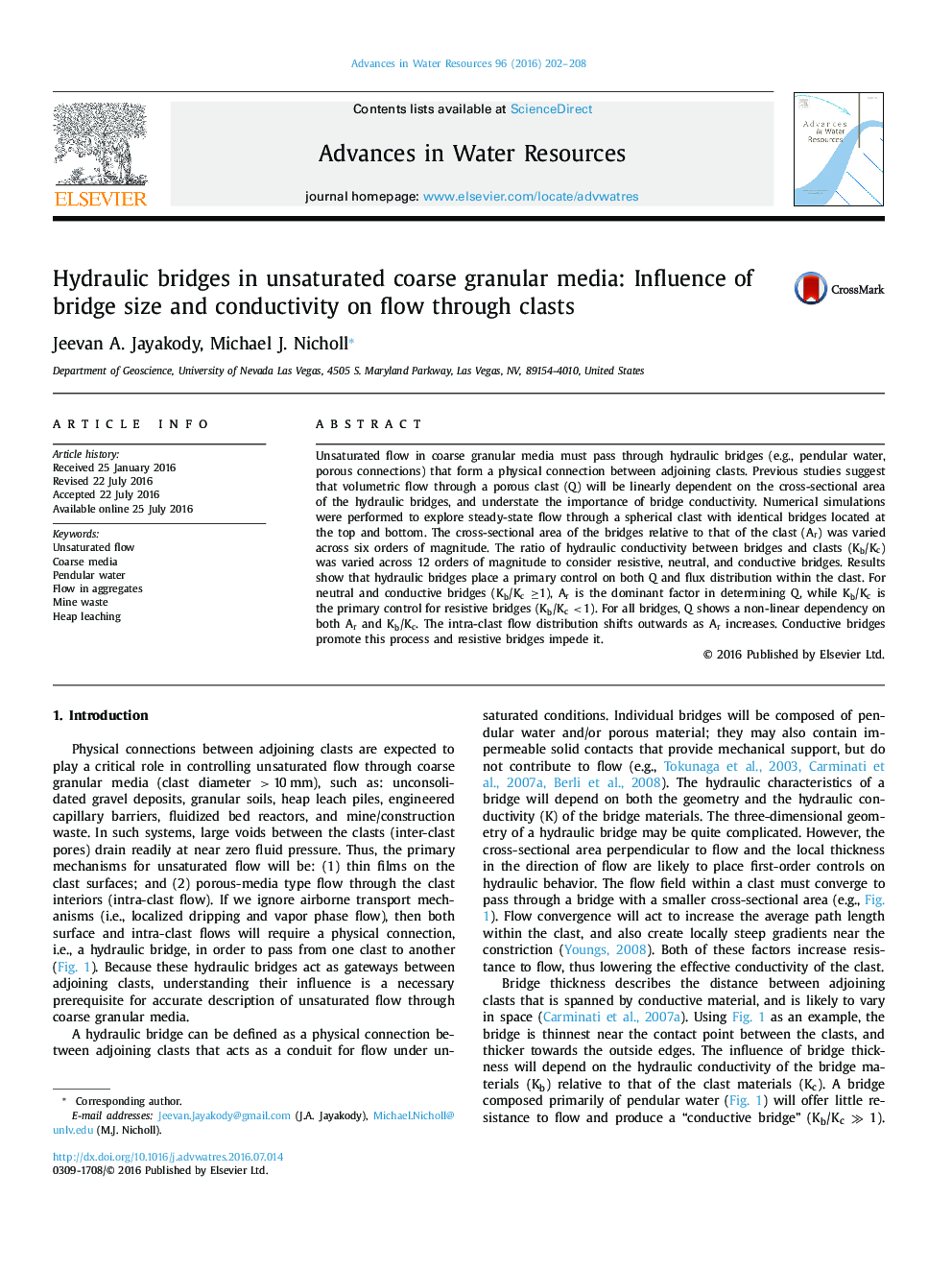| Article ID | Journal | Published Year | Pages | File Type |
|---|---|---|---|---|
| 6380516 | Advances in Water Resources | 2016 | 7 Pages |
Abstract
Unsaturated flow in coarse granular media must pass through hydraulic bridges (e.g., pendular water, porous connections) that form a physical connection between adjoining clasts. Previous studies suggest that volumetric flow through a porous clast (Q) will be linearly dependent on the cross-sectional area of the hydraulic bridges, and understate the importance of bridge conductivity. Numerical simulations were performed to explore steady-state flow through a spherical clast with identical bridges located at the top and bottom. The cross-sectional area of the bridges relative to that of the clast (Ar) was varied across six orders of magnitude. The ratio of hydraulic conductivity between bridges and clasts (Kb/Kc) was varied across 12 orders of magnitude to consider resistive, neutral, and conductive bridges. Results show that hydraulic bridges place a primary control on both Q and flux distribution within the clast. For neutral and conductive bridges (Kb/Kc â¥1), Ar is the dominant factor in determining Q, while Kb/Kc is the primary control for resistive bridges (Kb/Kc < 1). For all bridges, Q shows a non-linear dependency on both Ar and Kb/Kc. The intra-clast flow distribution shifts outwards as Ar increases. Conductive bridges promote this process and resistive bridges impede it.
Related Topics
Physical Sciences and Engineering
Earth and Planetary Sciences
Earth-Surface Processes
Authors
Jeevan A. Jayakody, Michael J. Nicholl,
